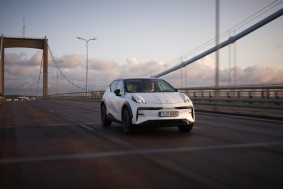The United States is improving access to clean energy across South Asia, allowing businesses to stay open longer, students to study at night and hospitals to provide uninterrupted care.
More than $1.6 billion in U.S. partnerships are advancing clean energy projects that will bring solar or hydro power to homes and businesses in Bangladesh, Bhutan, Nepal and India. The projects aim to spur economic growth and help avert the worst effects of the climate crisis.
“These shared investments have catalysed growth and increased prosperity across the region, which will pay dividends for generations to come,” Afreen Akhter, a deputy assistant secretary in the U.S. Department of State’s Bureau of South and Central Asian Affairs, said at a July 13 U.N. session on challenges facing middle-income countries.
The investments are part of the U.S. government’s Clean EDGE Asia (Enhancing Development and Growth through Energy) initiative launched in July 2018 to further sustainable and secure energy markets in the Indo-Pacific region.
The United States has mobilized $602 million in investment (PDF, 778KB) for a planned hydroelectric facility that will harness power from the Kholongchu River. This and other projects in the region reduce greenhouse gas emissions and foster cross-border energy cooperation between India and Bhutan, according to the U.S. Agency for International Development.
As the world’s most populous nation, India’s electricity generation decisions will play a major role in meeting global emissions targets and avoiding the worst effects of the climate crisis, according to Geoffrey Pyatt, the State Department’s assistant secretary for energy resources.
“We have no more important relationship in the entire world on issues of energy and climate than with India,” Pyatt said during a roundtable discussion with India state energy officials on August 4.
The U.S. International Development Finance Corporation has issued a $500 million loan supporting Arizona-based First Solar, Inc.’s construction of a solar panel manufacturing facility, projected to generate 3.3 gigawatts of solar power annually, enough to power roughly 2 million homes.
“Like the United States, India has recognized that it must shape its own sustainable energy future and has sought to supercharge the expansion of its domestic solar manufacturing capacity,” First Solar’s chief executive officer, Mark Widmar, said in December 2021.
In June 2021, USAID launched a five-year $17 million initiative to increase access to affordable and sustainable energy in Bangladesh. The Bangladesh Advancing Development and Growth through Energy (BADGE) partnership provides technical assistance to Bangladesh’s government and private sector to improve energy security and resilience as well as advance transparent and efficient energy markets.
In Nepal, where limited access to electricity and high transportation costs slow development, the U.S. government’s Millennium Challenge Corporation (MCC) and the Government of Nepal signed a $500 million compact to construct 300 kilometres of high voltage power lines and improve roads.
The Nepali government has committed another $197 million for a program total of $697 million, the largest up-front partner country contribution in the MCC’s history. The compact, ratified by Nepal in 2022, aims to use the country’s vast hydropower resources to expand access to clean energy domestically and for export to India and beyond.
The MCC is a U.S. government agency dedicated to promoting economic growth, reducing poverty and strengthening institutions. MCC compacts fight poverty by funding specific projects and attracting private capital to increase opportunities for trade and business that spur economic growth.












